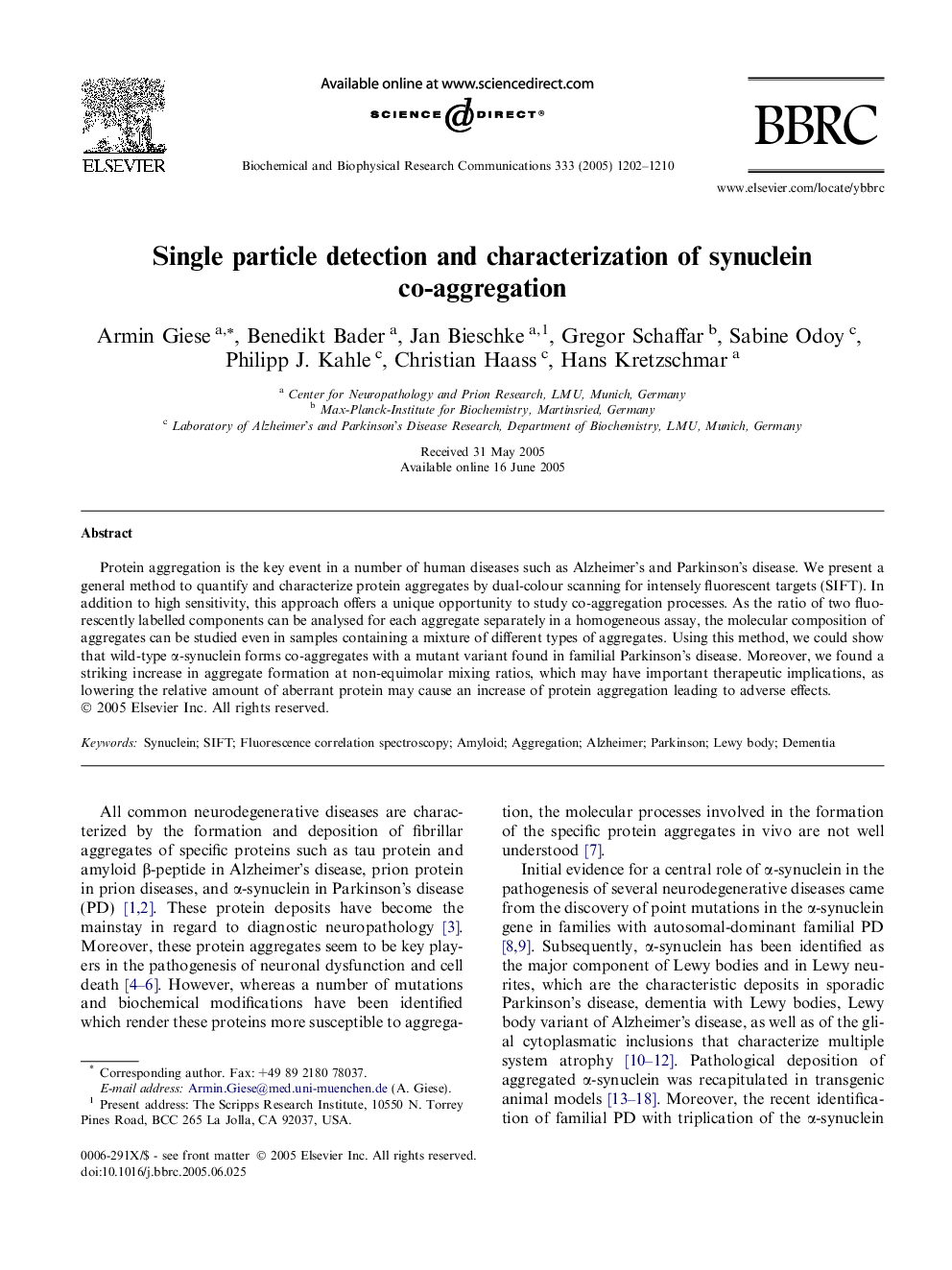| Article ID | Journal | Published Year | Pages | File Type |
|---|---|---|---|---|
| 10768569 | Biochemical and Biophysical Research Communications | 2005 | 9 Pages |
Abstract
Protein aggregation is the key event in a number of human diseases such as Alzheimer's and Parkinson's disease. We present a general method to quantify and characterize protein aggregates by dual-colour scanning for intensely fluorescent targets (SIFT). In addition to high sensitivity, this approach offers a unique opportunity to study co-aggregation processes. As the ratio of two fluorescently labelled components can be analysed for each aggregate separately in a homogeneous assay, the molecular composition of aggregates can be studied even in samples containing a mixture of different types of aggregates. Using this method, we could show that wild-type α-synuclein forms co-aggregates with a mutant variant found in familial Parkinson's disease. Moreover, we found a striking increase in aggregate formation at non-equimolar mixing ratios, which may have important therapeutic implications, as lowering the relative amount of aberrant protein may cause an increase of protein aggregation leading to adverse effects.
Keywords
Related Topics
Life Sciences
Biochemistry, Genetics and Molecular Biology
Biochemistry
Authors
Armin Giese, Benedikt Bader, Jan Bieschke, Gregor Schaffar, Sabine Odoy, Philipp J. Kahle, Christian Haass, Hans Kretzschmar,
